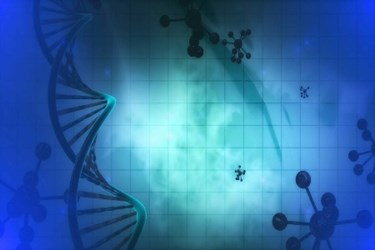New Crystallography Method Lets You Watch Molecules "Wiggle"
By Chuck Seegert, Ph.D.

The laborious process of X-ray crystallography has been simplified by a new analysis method. Scientists the world over can now see how drugs or new smart materials interact with other molecules in a motion picture-like format.
X-ray crystallography is a critical method for understanding the structures of molecules and proteins. Using the diffraction of X-rays caused by atoms in the molecules under analysis, molecular structures can be determined. Molecules, however, are not static structures, and they are constantly moving and changing. This makes crystallography a challenge, as it is usually limited to a snapshot of dynamic molecular processes.
"A static picture is not very helpful if you want to observe how molecular structures work. It is like trying to find out how a car works without being allowed to run the engine,” said Dr. Briony Yorke, the lead researcher on the project, in a recent press release from the University of Leeds. “You can look at the spark plugs and the piston and maybe take a guess at how it is going to function, but it is hard to really understand something without seeing it in action."
To see molecules in action, however, requires a laborious technique that was first conceived in the 1940s by a Nobel Prize winner named George Porter, according to the press release. Snapshots are taken with the molecules subjected to many different conditions and are eventually strung together like an animation sequence in order to make a moving picture of the processes at work. Unfortunately, there are only three places in the world where the equipment exists that can perform this type of work using traditional methods.
A new analysis technique published in an article in Nature Communications changes all this, however. The Hadamard Transform is the name of a mathematical method, and it allows the use of more common synchrotrons, or large X-ray generators, in crystallography and other applications.
"We demonstrate this method for crystallography, but it will work for any time-resolved experiment where the probe can be encoded,” said professor Godfrey Beddard, co-author of the study and Emeritus Professor of Chemical Physics at the University of Leeds, in the press release. “This new method means that, instead of having to go to one of the three instruments in the world that can currently do time-resolved crystallography, you can go to any beamline at any synchrotron — basically it massively opens the field for these kind of experiments."
The new Hadamard Transform-based method, while requiring lower power synchrotrons, also provides a greatly enhanced signal-to-noise ratio compared to the older methods, according the article. This enables extremely high resolution images of proteins and small molecule dynamics.
Crystallography is a cornerstone technique in the development of drugs and other therapeutics. It is not alone, however, as a method for studying the dynamics of these important molecules. Recently, in an article on Med Device Online, terahertz spectroscopy was discussed for the high-resolution study of proteins and other molecules.
